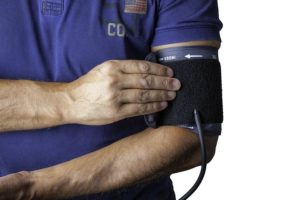What 5 factors affect blood pressure measurement?

As you can see from these graphs, age, gender and ethnicity all affect blood pressure.
![Figure 13, [Changes in systolic and diastolic blood pressure with age]. - The Seventh Report of the Joint National Committee on Prevention, Detection, Evaluation, and Treatment of High Blood Pressure - NCBI Bookshelf](https://www.ncbi.nlm.nih.gov/books/NBK9632/bin/importancef13.jpg)
1. Age
Blood pressure goes up as you get older – e.g.
– 90/60 can be normal if you are 20 years old woman
– 150/80 can be normal if you are 80 years old man
Also. Pulse pressure (the gap between systolic and diastolic blood pressure) gets wider as you age. It can be 40 mmHg at 20 years, and 70 mmHg at 80 years
2. Gender
Men have higher blood pressure than women
3. Ethnicity
Black/Asian people have higher blood pressure than white people
4. Cuff size
Using a cuff that is too small or too large on your arm can significantly affect the accuracy of your BP measurement, making it crucial to choose the right cuff size based on your arm circumference to get reliable results.
The usual problem is a small cuff in someone with big arms. This will increase the BP
5. Time of day
Blood pressure varies minute by minute, and hour by hour. For example, blood pressure follows a 24 hour ‘circadian’ rhythm, as shown in this graph.

BP increases on waking in the morning, in the early evening and decreases during sleeping at night (called ‘nocturnal dipping’).
Note. This is why it is important not to make a decision on a single BP reading. Several measurements are required.

